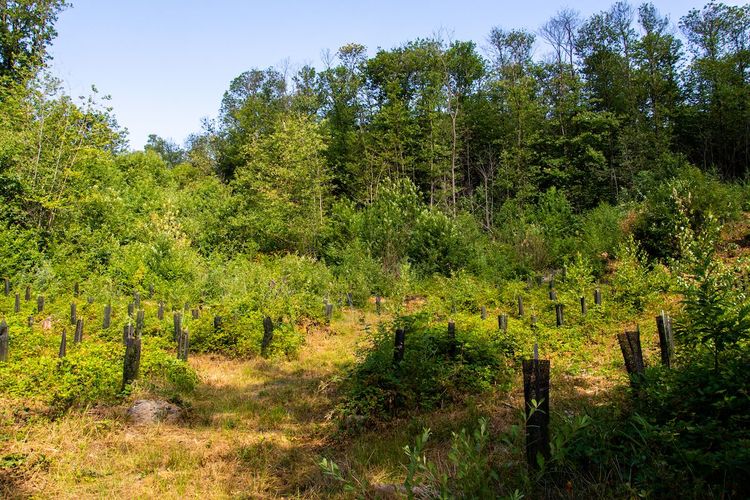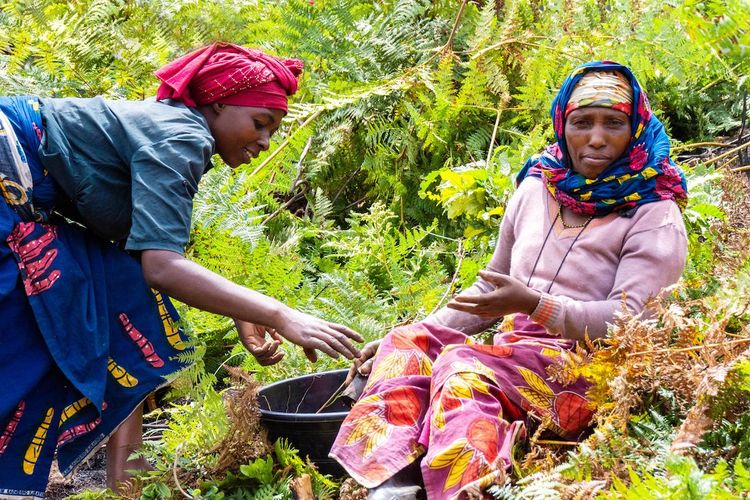Take action closer to home and worldwide by supporting ecosystem regeneration projects
Contact usStrengthen your CSR strategy and bring your stakeholders onboard
When it comes to restoring the natural ecosystems needed to meet targets for combatting global climate, biodiversity and land degradation, companies are key players.
At Reforest'Action, we are convinced that solutions are only effective when they serve everyone’s interests. That's why we offer tailor-made and value-creating solutions for companies and forest ecosystem restoration around the world.
All our projects are based on forests’ multifunctionality and aim to optimize benefits for the climate, biodiversity, the soil and local communities.
A wide range of various types of projects to choose from, based on the location of your production sites, of your customer base or your preferences.
Tools to communicate effectively and support the promotion of your actions using fair and equitable communication.
Tools specifically designed to get your customers, employees or service providers involved in your reforestation initiative.
A simple 4-step approach
From start to finish, we support your efforts to build a simple project that meets your needs together.
Projects with high Socio-Environmental impacts
All of our projects are designed to set up synergies between "Climate" and "Biodiversity" issues and use the optimization of ecosystem benefits over time around 4 pillars as their basis.
Optimize and develop carbon cycles to fight global warming.
Optimize habitats for biodiversity and limit the disturbances that affect it to maintain and enhance biological diversity.
Restore and preserve the quality and integrity of the soil/water system that ecosystem strength and health depend on.
Optimize the benefits for communities (income, education, resources, etc.) and contribute to ecosystem stability.
Why contribute to a forest ecosystem restoration project?
It means doing your part in the important fight against deforestation. Forest restoration is vital for humankind’s future. Many scientists, including the IPCC, have asserted that we need to reforest 1 billion hectares by 2030 to take large enough steps in favor of climate and biodiversity. In this context, the UN proclaimed 2021-2030 as the Decade for the Restoration of Ecosystems.
Resforest'Action, proven expertise since 2010
Act in Temperate or Tropical Climates?
The world's forests face two main types of threats: forest degradation (mainly in temperate climates) and deforestation (mainly in tropical climates). Therefore, both fuel climate change by reducing the surface area and quality of existing carbon sinks. The needs go hand in hand, depending on the area.
The main threat in temperate climates is forest degradation (linked to climate change and its natural disasters such as droughts, fires or storms, as well as diseases or insect swarms), which leads to a decrease in the ecosystem services that forests provide.
Through planting and/or assisted natural regeneration work applied to forests degraded by natural disasters, forest restoration reinstates a multifunctional and resilient forest. Rich in diversified species, such a forest will then provide a wide range of social, economic and environmental benefits.

In tropical climates, deforestation threatens forests and contributes to climate change. Alongside combatting deforestation, reforestation means reconstituting a forest ecosystem after a man-made cut or a natural disaster to preserve as well as enhance biodiversity and combat climate change.
Most of the projects chosen in these areas also contribute to developing agriculture that respects forest ecosystems more. These projects get local communities involved, have a positive impact on their socio-economic development and contribute to combatting deforestation.

Join our contributors











Reforest'Action View
Planting or Assisted Natural Regeneration (ANR)?
A solution used in addition to planting, ANR (Assisted Natural Regeneration) is a gentle forest management method that makes it possible to renew a forest over a long period of time, focusing on the gradual regeneration of the forest, i.e. the preservation of biodiversity and the soil’s carbon storage function throughout the process. Choosing either the planting method or the ANR method will depend on the type of forest plot. ANR work cannot take place in a plot that cannot regenerate naturally, i.e. a plot that does not have any seedlings from fallen seeds from adult trees. In addition, some forests need new species to be planted to enable them to adapt to climate change and better cope with droughts and diseases, just to name a few. Planting nursery trees is needed in such cases. In some cases (e.g. a forest suffering from a drought), it is possible to associate ANR with an enrichment of the stand by planting diversified species.